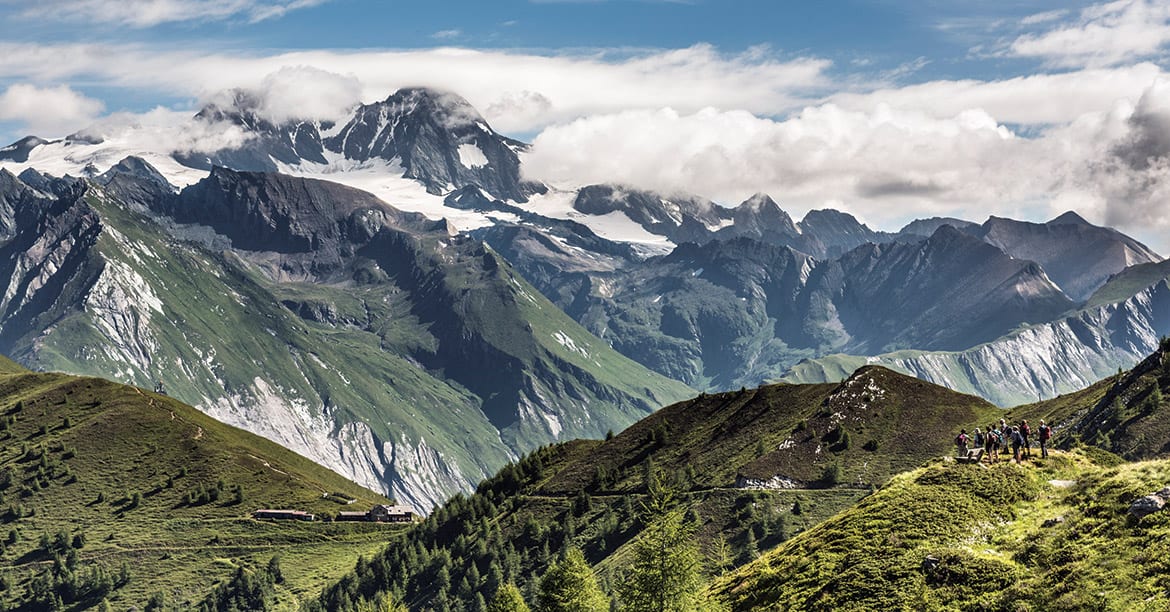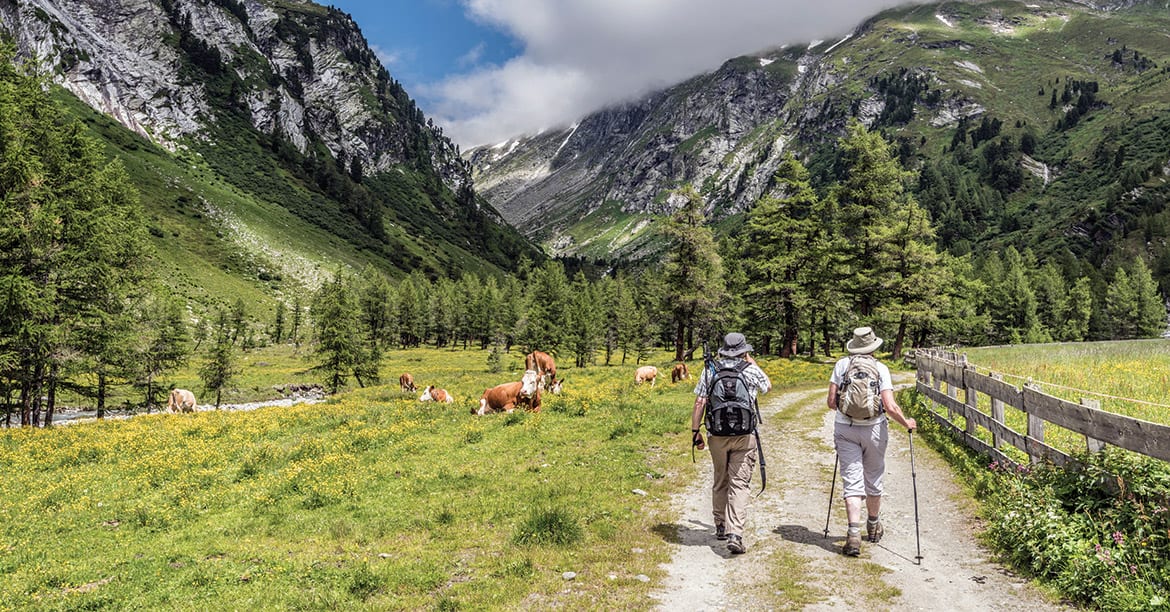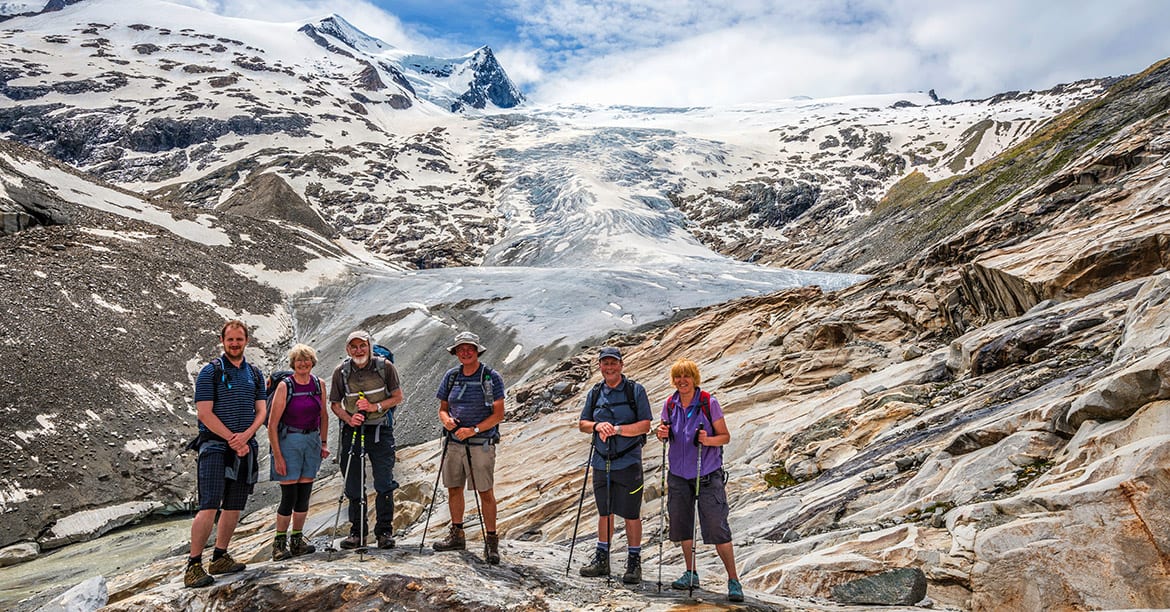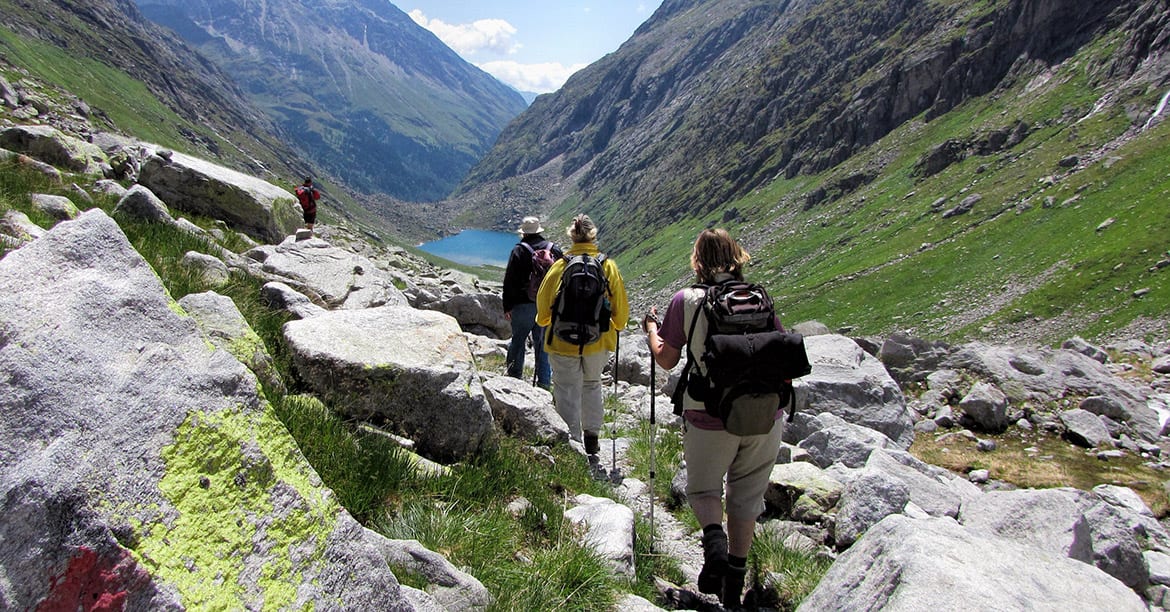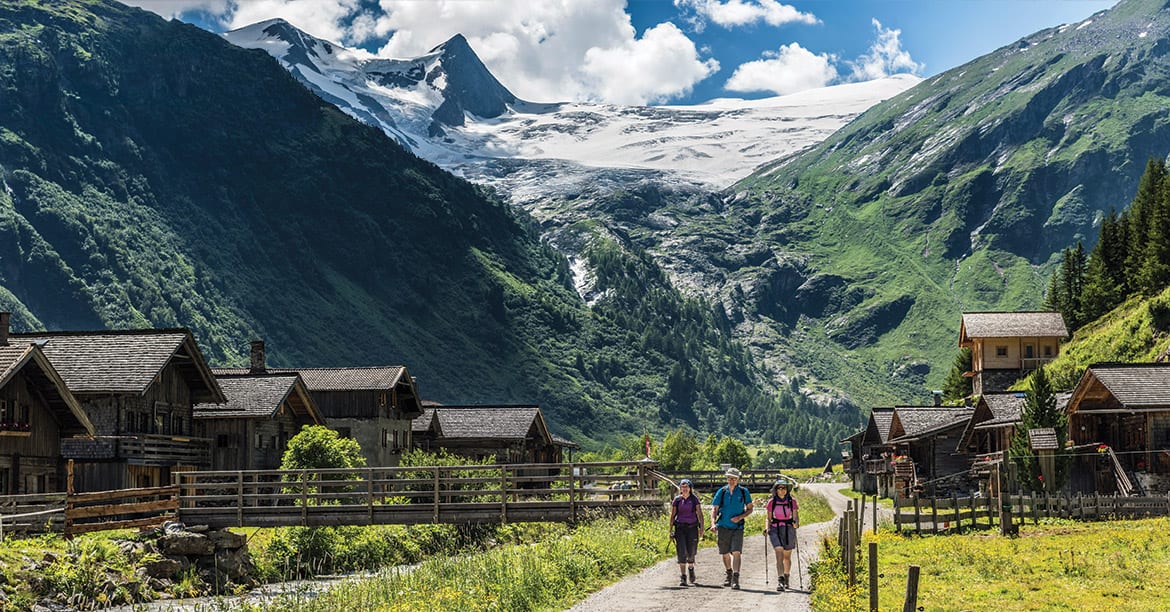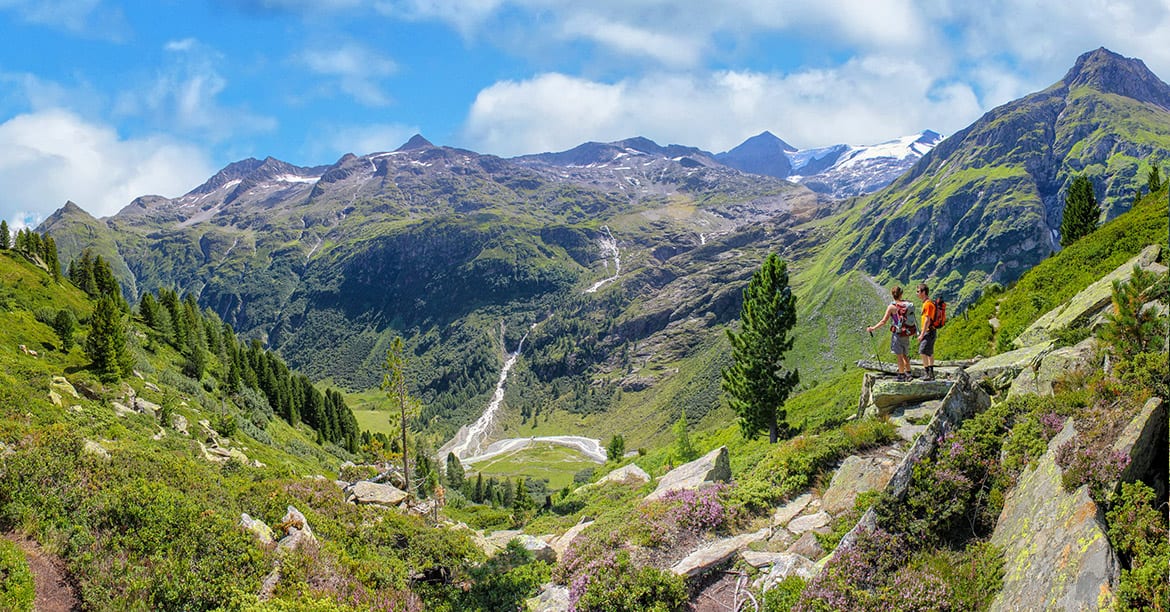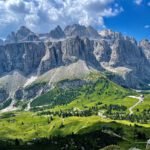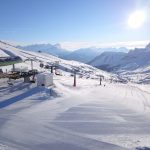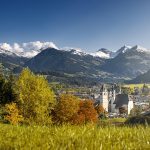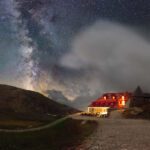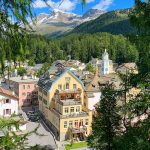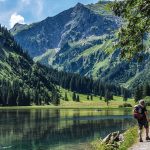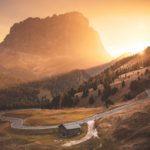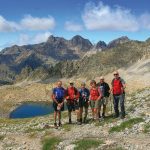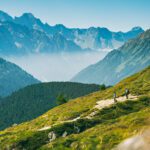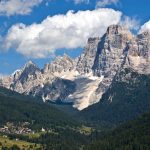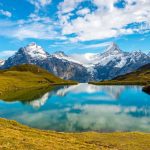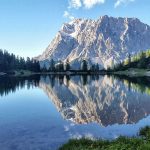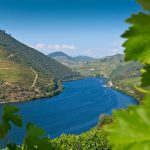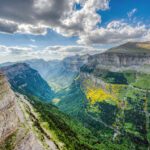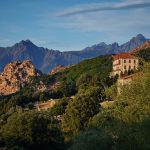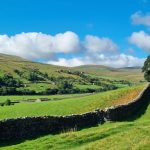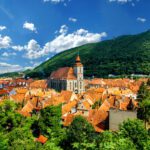22 June 2016
If you’ve never been walking in the Hohe Tauern National Park in East Tyrol, this post may well inspire you to do so. Join Collett’s own Beth Lloyd as she describes her recent walk through this breathtakingly beautiful and historical area.
After a fair few kilometres of driving up and away from civilization and even more still on foot through forest and fields, the last thing one would expect to see nestled in the base of the V-shaped valley was the little village we laid eyes on. Yet there it was, a cluster of stone homesteads, barns and a church with a simple wooden bridge across the river to reach them.
Walk organiser Clare and I were joined by some of our first guests here in Matrei, Aimon and Patricia, to search out this tiny settlement in the Austrian mountains, just shy of the Italian border.
Jagdhausalm village is one of Austria’s oldest farming settlements. At 800 years old this collection of smallholdings were first documented in 1212. Originally it was a permanent year-round settlement, but given the high altitude and the harsh winters it was soon abandoned. In 1406 the buildings were converted into farms and since then have been used solely in the summer.
Today the pastures and land are owned and managed by South Tyrol farmers, who bring around 330 young cattle to the farms in mid-June each year. Five or six shepherds look after the livestock, which are taken up to the higher farm (at 2440 m) in August. Milking is done only as needed. In 1950, 37 alpine dairy farmers processed 50,000 litres of milk and cheese from 340 cows.
The name Jagdhaus dates back to 1130, where the men of the Imperial Dynasties named the region as a state hunting ground and the first buildings were built. The valley, much like many of the Tyrolean areas we have explored so far, was very peaceful and as the clouds rolled in and out, scattering patches of warm sun, a gentle breeze encouraged us along our way.
The Schwarzach River
The footpath followed the Schwarzach River from the base of the valley and although the path and water constantly weaved together and apart they never dropped too far from one another. The water was running a glacial blue and was undoubtedly chilly with the time of year. Many of the surrounding peaks were contributing to the river with trickling lines of melt water running the length of their faces. Although there was still a few defiant patches of snow clinging to the shade of the North facing slopes.
On our journey we saw many of the staple Alpine flowers and much of the path was lined with bright yellow globe flowers. Gentians of almost every variety also dotted the banks and crisp white pasques were also in bloom. The leaves of Alpen rose bushes and lily plants were everywhere too and it won’t be long before they add to the already vibrant hillsides.
The majority of the walk so far had been on service tracks and although they would have been wide enough to drive a vehicle up none were seen. In fact, we only saw one other group of walkers the entire day –the positive side of walking in low season. The track climbed gently upwards passing through another quiet hamlet with signs of habitation but again no actual inhabitants.
Jagdhausalsm Village
Eventually the gradient became steeper around a great corner which revealed the village for the first time. At this point in the walk you are well above Jagdhausalm and so you look down on the stone walls from a distance. It is then time to branch off from the wider track, descending through meadows and picking up a narrow path that clings more dramatically to the hillside and lowers you gradually to river level.
Here we crossed the river and entered the village. Like an outdoor museum frozen in time, Jagdhausalm village looks as if all the inhabitants just upped and left on the spot. Despite its age the buildings are well kept and in no way dilapidated. Through the dusty windows of the church, pews can be seen empty and waiting and care has been taken to keep the gardens from becoming overgrown. A few plaques (in German) show pictures and give a brief history of the place but apart from that it remains mostly unchanged and although one of the buildings opens in peak season as a refuge it is in keeping with all the other structures.
From one of the information boards we were informed there was a lake up above the village which was hidden from view in a depression. We climbed a little higher for better views and took advantage of the beautiful photo spot. We then left the village and continued a little further up the valley, stopping momentarily to scan our surroundings at the sound of a nearby marmot.
Unfortunately it was well camouflaged in the tawny scrubland grasses so we moved on. Just five minutes further up the track another squirrel sat boldly on the bank showing off his thick coat and sizeable tail. He even stuck about long enough for his picture to be taken. It was encouraging to know that though all the people have gone from Jagdhausalm at this time of year the valley is still full of life.
We headed back to the car shadowed by a slow moving but intimidating dark cloud as is often the way in late afternoon. We escaped the rain with plenty of time however, arriving back to the car park and stowing our waterproofs away unused.
The Alpengasthof Oberhaus
As is customary for many a day in the mountains we decided to pop into a nearby refuge, the Alpengasthof Oberhaus, for a beverage. The owner was a stout man with a bushy white moustache and smiling eyes. He helped us muddle through ordering drinks in our best German and brought them to the table for us.
Shortly after he was pouring the schnapps and sharing a toast with us before picking up a guitar from the wall and singing an Austrian-sounding folk song with a group at another table. It was a great atmosphere and we felt very welcome. When it was time to leave he shook our hands and wished us well in a true sign of local hospitality.
We all agreed as we returned to Matrei, that it was a great day out and one I would very much recommend a visit to the Hohe Tauern. For full information and advice on how to plan your trip, contact us.
